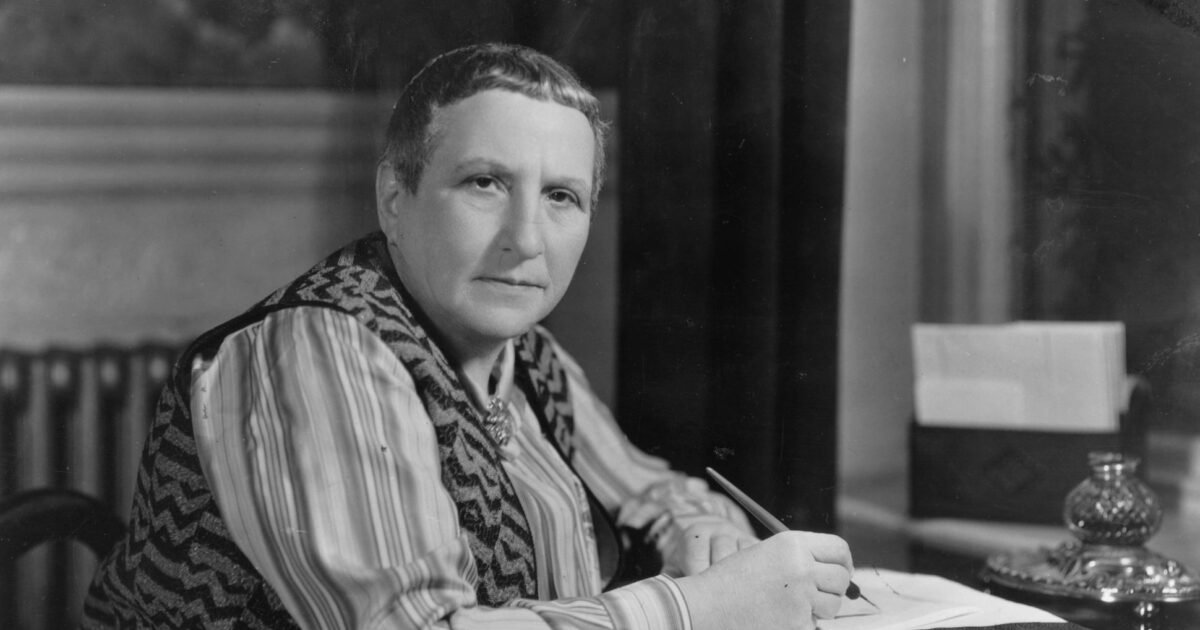As I mentioned in my post about Emily Dickinson, the second-place prize for most well-known poet who no one reads goes to Gertrude Stein. I’m going to focus on just one work of hers: Tender Buttons. It’s a book of prose poems, written intentionally as a book of poems, not just poems collected into a book. Therefore I believe it has much to say to the photobook makers of today. It’s also so much easier to pick one work, rather than try to talk about her entire ouvre.
First edition of Tender Buttons.
I also chose Tender Buttons because of how “visual” it is. The book is divided into three sections: Objects, Food, and Rooms. (Wouldn’t this make an interesting photobook already?) But let’s start imagining how Stein’s book could be useful to photographers by talking first about the title.
Have you noticed a pattern in the naming of photobooks? There seems to be a set number of formats, including, as the most common, the one-word title. Here are just a few examples: Exposures. Epitome. Cargo. Needle. Noticings. (You get the idea.) It functions, but it doesn’t usually create curiosity.
And the titles with more than one word are rarely ones that I find surprising or intriguing. Not too many photobooks have a title that generates curiosity like the name Tender Buttons. Happily, there are many exceptions, including Jason Fulford’s Raising Frogs for $$$. Surreally (and delightfully) random, right?. Bryan Schutmaat’s Good Goddamn is another. A brilliant title is Michael Ast’s The Windows Are Tinted To Help You Sleep. I bought this slim book just because the title made me laugh with joy.
Another would be Ron Jude’s Lick Creek Line. Talk about a charged and estranged line-up of three words. Coming upon it for the first time, there’s basically no way to even guess what the title might mean, or what the photographs might be inside the book, but the words compel curiosity. If there’s one thing that I think is frequently missing from photobooks and photography today, it would be mystery.
Stein’s book plunges us into an utter mystery of words. Oh, we might feel comforted by the simple title of the first section—Objects—but then we turn the page and find the following, the first poem of the book:
A CARAFE, THAT IS A BLIND GLASS
A kind of glass and a cousin, a spectacle and nothing strange a single hurt color and an arrangement in a system to pointing. All this and not ordinary, not unordered in not resembling. The difference is spreading.
Not ordinary indeed. We are clearly in a realm beyond the simple and clear. In the book, Stein has not given us an “artist’s statement,” as most photography today does, which might explain away the mystery and make it perfectly clear what the artist is doing so that we might rest assured we will not be puzzled, perplexed, stuck, frustrated, or otherwise in a state of unknowing and curiosity. Yet, at the same time, do we need, as readers, a doorway into what is a truly challenging work?
Picasso’s famous portrait of Stein.
Perhaps usefully, Tender Buttons does come with enough of an introduction, written by the author Sherwood Anderson, a contemporary of Stein’s, to help us find some sort of footing without the mystery being destroyed. He suggests that these are portraits in words, portraits influenced by her cubist friends Picasso and Braque. He continues:
“…they revealed Stein to be attacking the denotations of words: while the individual elements of her sentences were familiar, their significance as a whole seems to be stripped away.” He continues, “She emphasized their musical qualities, favoring sound over sense. Confronted with such unexpected associations and willful incoherence, the reader is left to question the meaning of words, to become reacquainted with a language that Stein thought had been dulled by long use.”
The reason this introduction is different, in my opinion, from the artist’s statements of today is 1) it’s not the artist telling us what they’re going to tell us in the work. 2) It does not use artspeak to appeal to an academic audience, but uses everyday language. 3) It does not over-explain everything, but rather helps us into the work and allows us to keep walking along a dark cavern of uncertainty and unfamiliarity that might otherwise seem unapproachable.
The danger, of course, is that we might say, “Oh, I get it. Now I know what’s going on.” Mystery dissolved. Not that the work should remain unknowable, but the reader could then be deprived of the experience of the work because they’re not motivated to wrestle their own understanding out of it.
Stein with Alice B. Toklas and their poodle, Basket.
Reading Tender Buttons is a great way to shake loose new ideas about how a sequence of photographs (or any other medium) could generate meaning, and how a book of images might be structured. Photography in particular has a rather linear heritage, and Stein’s extremely non-linear, non-traditional use of language could inspire all kinds of new approaches to shaping photographic experiences.
I’ll close with one more short poem from the book:
NOTHING ELEGANT
A charm a single charm is doubtful. If the red is rose and there is a gate surrounding it, if inside is let in and there places change then certainly something is upright. It is earnest.
There is an utterly affordable edition of Tender Buttons published by Dover Books. For more about Gertrude Stein you might go to https://www.poetryfoundation.org/poets/gertrude-stein.



